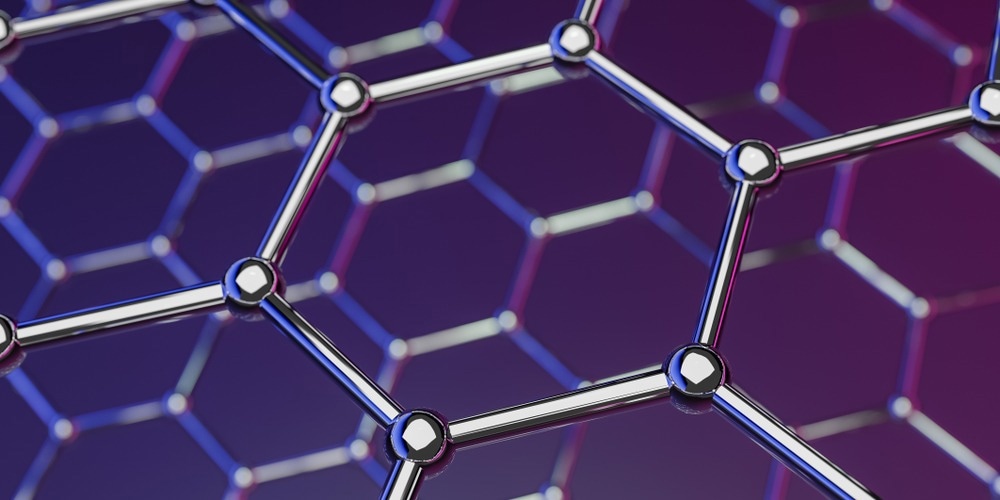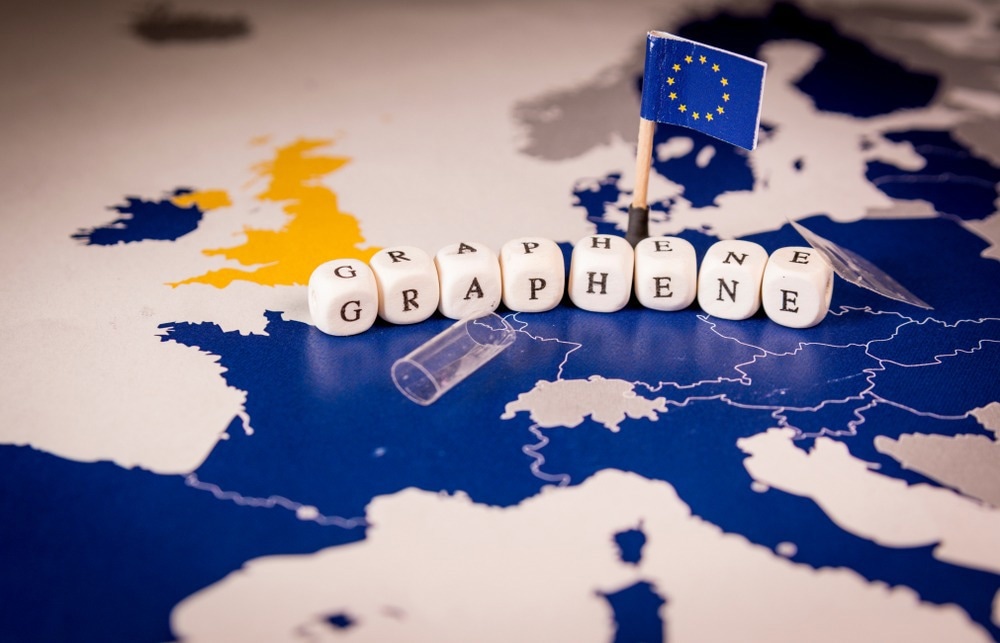AZoNano is collaborating with the Graphene Flagship to highlight members of the Graphene community that are working on exciting projects incorporating graphene. Here, AZoNano speaks with Dirigent Acoustics about the benefits graphene could bring to acoustic and audio technologies and how the company's relationship with the Graphene Flagship has shaped its success.
Please could you introduce yourself and your role at Dirigent Acoustics?
My name is Dejan Todorović, and I am an Acoustic Engineer. My interest in acoustics started when I was a student at the Faculty of Electrical Engineering in Belgrade, where I earned a magister's degree in technical acoustics.
Currently, I am a Ph.D. candidate, and my research focuses on applying graphene in acoustics and audio technologies. I have led the team that developed the first large-membrane graphene microphone and worked on developing graphene MEMS microphones. Currently, I am further developing graphene-based acoustic sensors and audio devices.
Throughout my professional career, I have gained experience in various aspects of acoustics. I have worked as a researcher, university teaching assistant, engineer, and consultant. In 2007, I founded Dirigent Acoustics as the Managing Director. I am involved in every project, but my main focus is research and development.
How did you become involved with acoustics?
After working in various job positions in acoustics in the regional market for several years, I had an opportunity to pursue a Ph.D. in acoustics at Aachen University in Germany. However, I decided to stay in Serbia and make a difference in this part of the world. I knew it would be challenging, but my adventurous spirit and hunger for challenges, which are part of the Serbian people's character, led me on this rollercoaster ride. I always try to look beyond and move forward.

Image Credit: AlexZaitsev/Shutterstock.com
What are the company’s main ethos and core aims?
The primary focus of our company is to provide services in acoustics and audio technologies. At the same time, we conduct research and develop new technologies related to our core business. Possessing extensive theoretical and practical knowledge is crucial for comprehending complex tasks and understanding their goals and issues, which always leads to new ideas.
If you look at the name of our company, you will see that it is a combination of the words "Dirigent", which is a Serbian expression (taken from German) for the orchestra conductor, and "Acoustics", the field in which we work. It represents our intention to lead and bring perfection and pleasure to the world through our virtuosity and harmony.
Our company motto is "You say impossible, we say challenge!" Working in acoustics means standing up for a better world by combating noise pollution, which is only a small part of today's challenges. However, it is where my team of experts and I can make a difference. I believe in the power of science, enthusiasm, hard work, and the pursuit of perfection.
Living in one of the world's most multicultural environments, we are committed to caring for people and always consider sustainability in our work.
Dirigent Acoustics serves as a hub for various experts to provide comprehensive solutions to our clients and educate and share knowledge. We collaborate with many educational and research institutions in the region and, thanks to the Graphene Flagship, some of the world's most advanced universities as well.
We have signed agreements with the Faculty of Technical Sciences in Novi Sad and the Faculty of Dramatic Arts in Belgrade, where we established the critical listening room and our acoustic and audio training center. Students from those faculties receive internships within our company.
Could you discuss some of Dirigent Acoustics’ highlight technologies and solutions?
Dirigent Acoustics provides a range of services, including creating strategic noise maps for roads, railways, airports, and urban areas. These maps serve as the basis for action plans and subsequent noise mitigation measures we are developing.
Acoustics is a somewhat abstract science due to the complex wave propagation phenomena. The sound wave reflects, transmits, diffracts and refracts all the way from the source to the receiver. While it is close to common sense, I would say that, from my experience in several courses in theoretical physics and optics, dealing with it for a certain amount of time, the field of acoustics is somewhat close to quantum physics.
Therefore, we always use the most advanced tools to calculate and present the acoustic field, to visualize and present it in the simplest way possible. This includes the use and development of cutting-edge acoustic sensors and software. Doing so helps us and our clients understand the acoustic events, behavior, and consequences of actions taken.
Through our research, we are developing graphene microphones (including MEMS), the most sophisticated microphone arrays, beamforming, and classification algorithms. We are also developing a new instrument for in-situ acoustic measurements, an innovative audio interface, and a new type of acoustic absorber.
We have constructed the world’s first acoustic camera for airborne acoustic mapping. Additionally, we have developed software for calculating sound insulation in buildings.
How do these differ from existing technologies?
We are trying to weave our knowledge and experience with new ideas to improve existing technology. For example, developing the first large-membrane graphene microphone prototype in 2014 was one of the first applications of nanomaterials in acoustics.
Later, we tried to develop the first MEMS microphone with a graphene membrane, but did not have the technology for success locally. By joining the Graphene Flagship, we connected with a group in TU Delft and continued working on MEMS, resulting in a recently published paper in the journal Nanoscale.
ML and AI open new horizons in acoustic event classification; we are using them in our H2020 BorderUAS project for the most advanced acoustic sensors based on a low-noise, high-sensitivity graphene microphone array. Here, we are crossing the limits of current technology at several levels. We are also preparing for a new Horizon Europe call, where we will try to go one step further.
On the other hand, with our partner from TU Delft, we are preparing a PoC experiment that, if we succeed, could advance professional and consumer audio. Overall, new technology is widening the limits in every direction, we can detect weaker sounds, and we can extend the frequency bandwidth towards ultrasound with one sensor.
Furthermore, graphene MEMS sensors could be an ideal choice for achieving improved linearity and fidelity through the application of novel technology, as they can reduce wavefield disruption caused by the sensor itself.

Image Credit: Production Perig/Shutterstock.com
Why is graphene so exciting for acoustic and audio technology applications?
When speaking about acoustics and audio, we should start with the basics – hearing.
The listening field has a dynamic range of more than 120 dB and a frequency range of 10 octaves (from 20 Hz to 20 kHz), which is impressive. The phase and all other audio signal information must be accurate to create a reliable stereo or immersive sound stage.
Low noise, high sensitivity, wide frequency and dynamic range, and perfect linearity of the transfer function are essential, and this is a good starting point. But in sound, we perceive much more detail, which is why human hearing is so hard to measure, explain and finally, achieve. This is where low-cost transducers, electronics and compression algorithms are losing the race.
For specific applications, like in professional audio or high-end music, or for sophisticated acoustic measurements and experiments where the acoustic event is a consequence of the observed process, we are probably looking beyond the limits of current technologies.
In all critical applications, graphene's remarkable electrical and mechanical properties are the keys to success. For example, our first paper, published in 2015 in 2D Materials, proves that graphene microphones can reach high-frequency limits, up to several MHz, with constant sensitivity.
Developing graphene-based electric circuits could also lead to other benefits, low voltage and low power consumption sensors and devices, including simple and robust power supply cells, etc. These achievements are made possible by the high flexibility, small thickness, and high breaking strength of graphene.
Could you comment on the current commercial landscape of graphene, and how this might evolve in the next 10 years?
As someone who has already spent ten years in the field, I perceive your question as a halfway milestone.
Overall, an enormous advance has been made: we already have off-the-shelf solutions, devices, and sensors we can buy and apply to systems we are developing. However, this was not easy; think of manipulating membranes whose thickness is only one or several layers of atoms, and making them stable, incredible! But this is graphene.
I would give the Graphene Flagship the most credit, as I believe that a systemic approach has largely influenced the current state of development.
At the same time, the quality of graphene, which is essential for applications, has dramatically increased. I can confirm this directly by working through the years on our large-membrane graphene microphone prototypes.
In the next ten years, I want to fulfill my dreams of massively producing various acoustic and audio products implementing graphene. Further collaboration through the partnerships formed with the Graphene Flagship will probably remain essential for smaller research centres, such as the one within my company.
In the next ten years, the further development of supercapacitors, solar panels, various advanced electronics, and many new types of sensors will be continued, and the market will be filled with graphene-based devices.
How did you become involved with the Graphene Flagship?
My company is an Associate Member, one of only two members in the region, including Serbia, Croatia, Bosnia and Herzegovina, Montenegro, North Macedonia, and Albania. The second one is the Institute of Chemistry, Technology and Metallurgy, a National Institute of the Republic of Serbia, with whom we collaborate daily.
I believe I was blessed when, back in 2014, I met Prof. Marko Spasenović when I was working on a graphene microphone prototype.
Marko has been my friend and the company's closest and most crucial scientific associate ever since. Even though Marko is younger than me, he is also my scientific guru, and we share similar dreams.
When I found that the companies involved in graphene research are welcome to join the Graphene Flagship, I contacted Marko immediately to help me with the application. As usual, we carefully wrote and compiled it and filed the application.
Everything went smoothly, and the Management Panel of the Graphene Flagship approved Dirigent Acoustics as an Associate Member of the Graphene Flagship, within the Work Package Sensors. Our application was supported by WP leader Peter Steeneken of Delft University. It was an excellent day for Dirigent Acoustics and me.
For the past three years, Dirigent Acoustics has been a proud member of the Graphene Flagship community.
What are some of the benefits of your relationship with the Graphene Flagship, and why was it important to establish strong ties with such an organization?
Connecting with the Graphene Flagship is an excellent opportunity for companies with profound research experience and a good idea to develop and work in graphene. From my experience, I point out three significant benefits.
The first is to be well-informed and recognised as a reference partner for such research. It is not important what is your primary field of expertise; graphene could find an application in almost every branch. For example, we at Dirigent Acoustics are one of only a few groups worldwide engaged in acoustics and audio, which makes our profile unique within the Flagship.
When a specific topic arises within a large industry cooperation/company or some research or product development consortium, specialised SMEs or laboratories need to be visible to them, which is where our participation in the Flagship matters.
The second significant benefit is the collaboration with the best research centres involved in graphene production and characterisation. Our primary partner is TU Delft, and we have significantly benefited from this collaboration. For example, for the latest samples of our graphene microphones, we are using molybdenum-grown CVD graphene, a process developed in TU Delft. That is the graphene we will use further for future research and development, as this unique type of graphene shows fantastic mechanical behaviour.
The Graphene Flagship events are a great way to meet my colleagues and discuss the topics we are interested in. Gaining new partners is always easiest when you meet someone in person, exchange visions and recognise that you share the same interests and values. Appearing at Graphene Flagship events is the most efficient way to network and get a clear overview of the development status in all areas.

Image Credit: Ivan Marc/Shutterstock.com
The Graphene Flagship is catalyzing graphene R&D within Europe, cementing its place as a global graphene powerhouse. What more could be done to boost the European graphene industry?
I am not an expert in worldwide industry development, so I can only give you my humble point of view. First, the quality of graphene is essential for the industry I am involved in. Regarding this, I would suggest supporting further work on technologies for graphene production.
Graphene free of cracks and wrinkles is the one I am seeking for my applications. Within our laboratory, we developed and patented a wet graphene transfer procedure that best suits our needs.
Still, the transfer is complicated and fragile, and this is the process with the highest risk. Since the method of transfer correlates directly with the method of graphene production, I would increase efforts to find an optimal pair, leading to the highest quality production and most effortless transfer.
Finally, for me and other laboratories with limited funds in development, it is beneficial to receive additional support for our specific ideas. It is thus amazing to see the appearance of the first graphene foundries in Europe, where one can order small-scale batches for trials. However, the types of graphene on offer within those foundries should be expanded as quickly as possible. For example, we would love foundry-type access to high-quality few-layer graphene.
Wide access to pilot-scale devices from foundries for various forms of graphene, could be beneficial to speed up the development on a basic level, resulting in faster PoC within small research entities such as mine.
Such a development would very much lower the entry barriers to new players in the graphene market.
Are there any challenges that must be overcome to achieve this?
All nanotechnology transfer is a challenge. From the basic idea of manipulating such fragile nanostructures to finally making a product of it is a great challenge, but we succeed in overcoming most of the challenges. Running the company and several innovation projects, I deal with risks each day. Additionally, my region is still the most unstable in Europe.
I deeply respect difficulties, obstacles, and challenges but am optimistic and always look forward to new projects and technology challenges. Small graphene-targeted grants would speed up PoC experiments and give quick answers if an idea is on a good track or not. I am optimistic that in these circumstances, many small laboratories would develop “crazy” new things.
What is there to look forward to from Dirigent Acoustics?
We are very curious, and we have so many ideas to explore. We have established an Institute of Acoustics and Audio Technologies within the company. This is our research department, where we will put our ideas to the test, disseminate our research, and provide education.
Further support from the European Commission and access to funds for financing would give us wind beneath the wings. We would also be interested in seeing extensions of the Graphene Flagship.
We will continue striving to be, at least, a regional leader in applying graphene, nanotechnology and AI in acoustics and audio technology. With our worldwide network of partners, we should introduce graphene in professional and consumer audio at several levels.
In acoustics, we are looking to develop acoustic sensors for novel applications, such as “communication” with plants and surveillance, hopefully saving endangered wild species.
About Dejan Todorović
 Dejan Todorović is the founder, owner, and managing director of Dirigent Acoustics, a research and development SME based in Serbia. Before establishing the company, he worked as an acoustics engineer at Radio Belgrade and served as an expert consultant at the Public Health Institute in Belgrade. He also taught as a professor and teaching assistant at the School of Electrical Engineering at the University of Belgrade and the School of Electrical and Computer Engineering of Applied Studies in Belgrade. At the beginning of his career, he worked as a junior researcher at the Serbian Institute for Advanced Materials.
Dejan Todorović is the founder, owner, and managing director of Dirigent Acoustics, a research and development SME based in Serbia. Before establishing the company, he worked as an acoustics engineer at Radio Belgrade and served as an expert consultant at the Public Health Institute in Belgrade. He also taught as a professor and teaching assistant at the School of Electrical Engineering at the University of Belgrade and the School of Electrical and Computer Engineering of Applied Studies in Belgrade. At the beginning of his career, he worked as a junior researcher at the Serbian Institute for Advanced Materials.
Dejan is a member of the Serbian Chamber of Engineers and currently serves as the president of the Serbian AES Section, which is affiliated with the Audio Engineering Society Inc (www.aes.org). He has been an invited speaker at numerous conferences and served as a paper co-chair at the 140th AES Convention in Paris in 2016. He is also a co-founder and co-chair of the International Biannual Conference TAKTONS.
In addition to his extensive professional accomplishments, Dejan is a pioneering researcher in the application of graphene in acoustics, with several highly cited papers in this area. He is currently pursuing his Ph.D. on this topic. Dejan has published three textbooks, several book chapters, and more than 70 papers in leading scientific and engineering journals and conferences.
Disclaimer: The views expressed here are those of the interviewee and do not necessarily represent the views of AZoM.com Limited (T/A) AZoNetwork, the owner and operator of this website. This disclaimer forms part of the Terms and Conditions of use of this website.